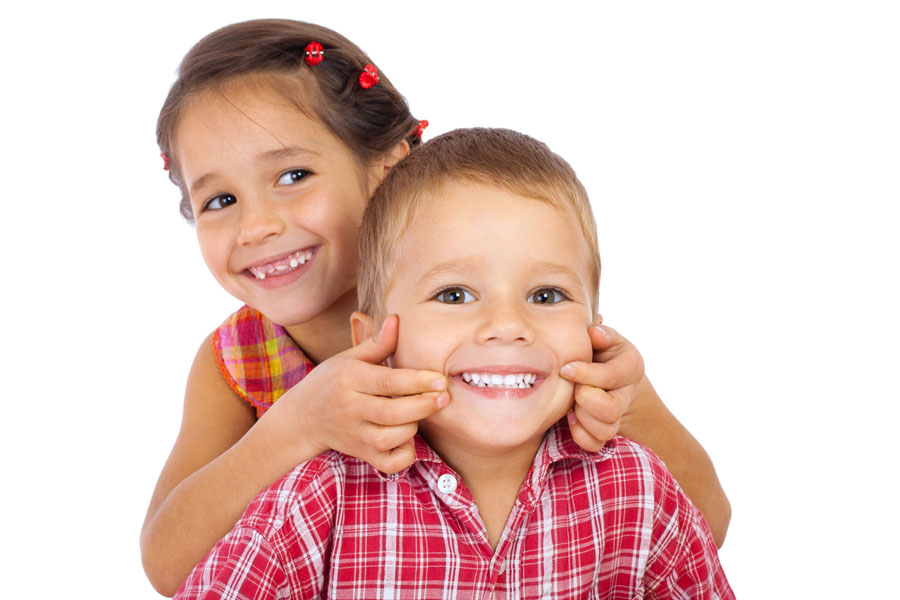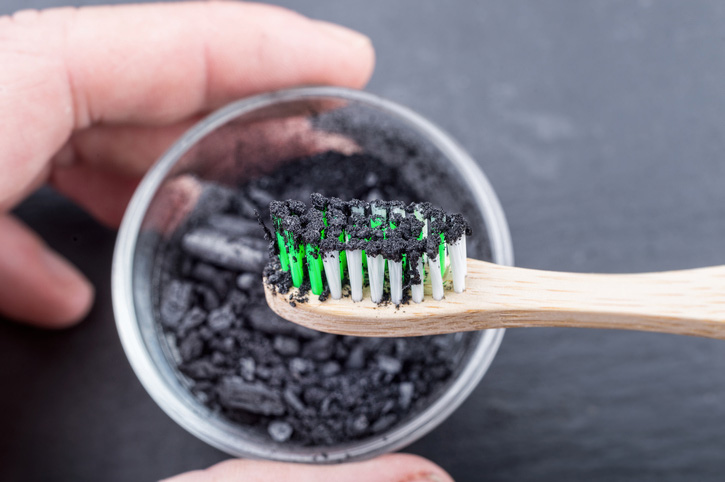Is Teeth Whitening for Kids Safe?

It is highly unlikely that a child who still has baby teeth has incurred enough staining to have noticeably yellow teeth. If they have then the first question should not be “is teeth whitening safe?” but rather “how did their teeth get to this point?” It is not recommended that young children consume the types of food and beverages that normally cause staining, such as coffee, tea, soda, and red wine. Therefore, if any of these are currently given to them on a regular basis the consumption should stop.
The safety of traditional teeth whitening for children with baby teeth is doubtful. It should certainly not be used in children who are too young to brush unsupervised or use mouthwash since the risk of swallowing the whitening agent is even higher in both potential and ramifications than with adults. Baby teeth are smaller and thinner than adult teeth so the potential for sensitivity that already accompanies whitening is even greater with children. Home whitening kits are also tailored for adult mouths, so there is a much greater chance that damage to the gums will occur if you attempt to use them on a child.
In the rare case where your child has yellowing of their baby teeth due to extenuating circumstances, you can consult their dentist to determine whether or not whitening is appropriate but, in general, it is not recommended to perform this process on children who still have their baby teeth. If environmental factors have led your child to have stained teeth before their baby teeth fall out then take this as a learning experience and help guide them to better dental hygiene with their adult teeth when they grow in. Whitening should especially not be done when the child is in between states where they have both baby and adult teeth. The adult teeth that are whitened will likely be brighter than subsequently erupting adult teeth and the coloring will be permanently off.
If your child is a teen with all of their adult teeth and decides they want to do some whitening then first you should consult with a dentist. Whitening is a strictly cosmetic procedure and there can be side effects such as increased sensitivity and gum damage if not done properly. The dentist can advise whether the child’s teeth truly are yellowed to the point of benefitting from whitening.

Many fall into the trap of thinking that they can do full whitening whenever the shade of their teeth reaches an undesirable level and then resume normal habits afterward. In fact, the best chance you have of retaining your pearly whites is to avoid staining consumables and maintain proper hygiene. At some point, whitening will no longer be an option, so it is best to maintain good dental practices and whiten sparingly. Beginning the whitening cycle in the childhood years can quickly lead to unrealistic cosmetic expectations and long-term damage to the teeth. It is, therefore, imperative to only begin this cycle once truly necessary.
To summarize all of this discussion and answer the question, “Is teeth whitening for kids safe?” our recommendation is NO for children who still have their baby teeth, and technically yes if they have their adult teeth. In both cases, there are other natural suggestions we would make before turning to chemical and professional services. These are some less extreme and more natural ways to improve the brightness of your kid’s smile:
1. Eliminate staining food and drink from their diet. While this practice on its own will not whiten the teeth, not doing so will counteract any measures you might take and further stain already yellowed teeth. If it is totally impossible to accomplish this then at least make sure to use a straw for all staining beverages. This will move the liquid past the visible front teeth and reduce the amount of contact it has with all the teeth in general.
2. Use whitening toothpaste and mouthwash. This seems like another obvious recommendation but these formulas, when used regularly, can remove some surface staining and lighten teeth by several shades with practically no negative side effects that usually come with whitening treatments.
3. Visit the dentist regularly. It is recommended that every six months you get a check-up and cleaning. During your visit, the surface of your teeth is polished which helps to remove surface stains.
4. There is some anecdotal evidence that certain fruits like strawberries and pineapple can help remove stains and whiten your teeth. Once or twice a week you can try mashing some of this fruit up and brushing with it. Of course, for better health overall, you can simply incorporate more fruits and veggies into your diet on a regular basis, with an emphasis on the ones that can brighten your teeth.
5. Activated charcoal has been making headlines lately as a way to gradually whiten your teeth without using any harsh chemicals. Look for a product that comes highly reviewed and recommended, preferably with actual before and after results. These tend to require several weeks of regular use before an effect is seen but many who have had success with charcoal claim it works better and faster than commercially available whitening toothpaste. This should be safe for children who can be trusted not to accidentally swallow the mixture as they brush. They may also find the process fun and look forward to it as it will turn the mouth and gums black for a short time, like a zombie.
